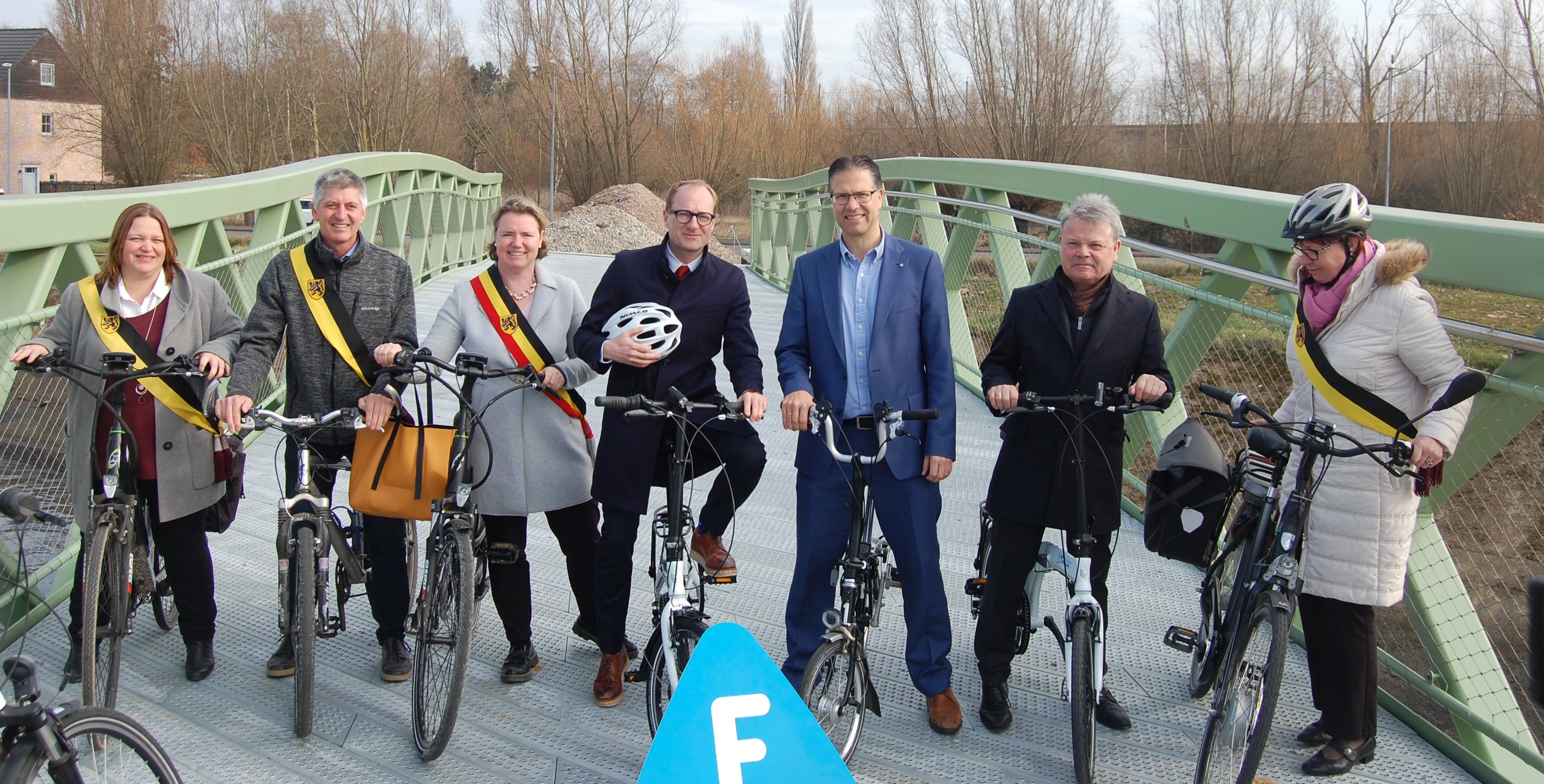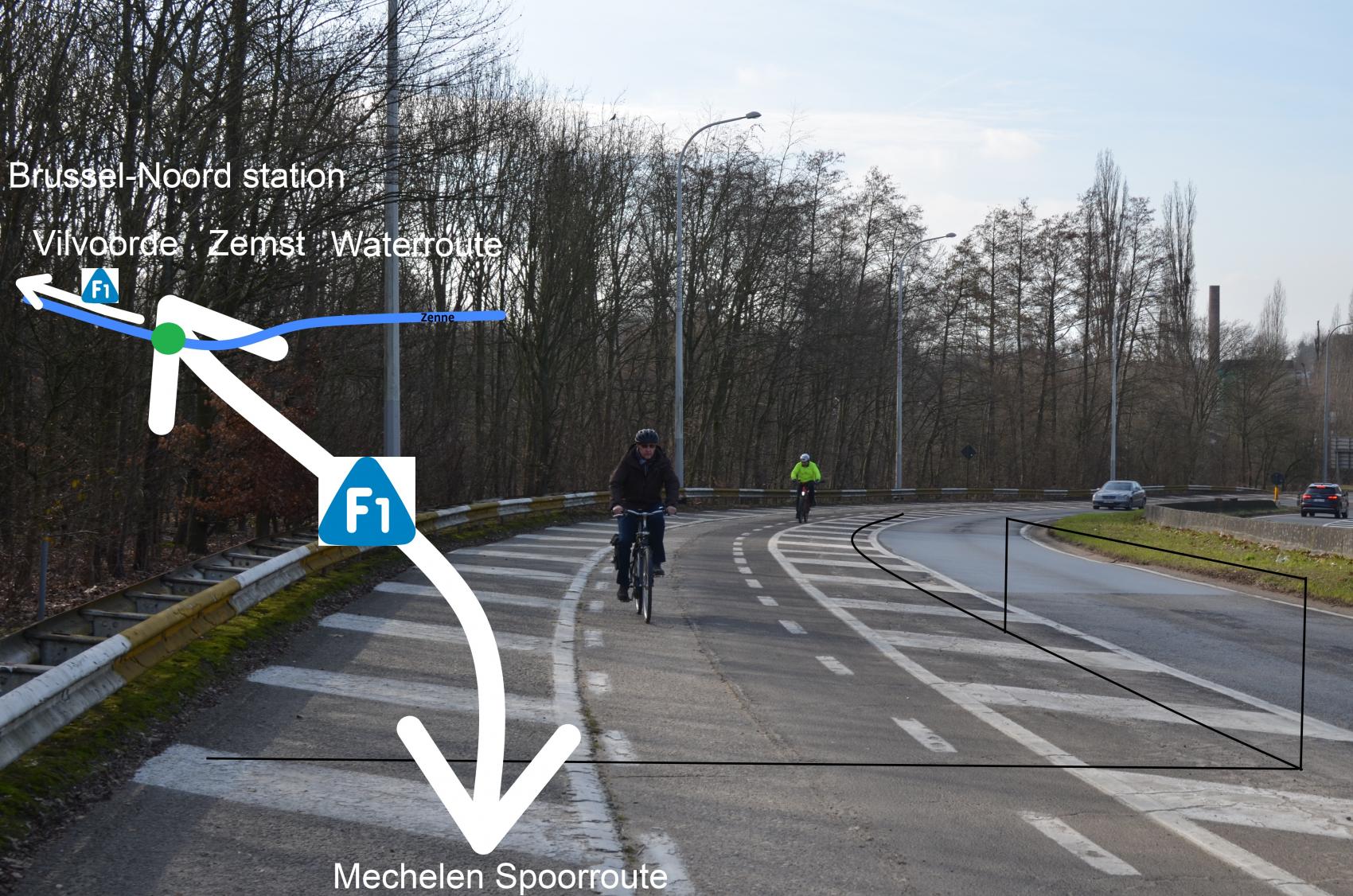
More safety and comfort on the F1 cycle highway
The 46 km F1 cycle highway connecting Antwerp with Brussels has undergone significant upgrades on the stretch between Zemst and Eppegem. On the 20th of February, the improvements along the Zenne were inaugurated by Flemish Minister of Mobility and Public Works, Ben Weyts, and include a brand new cycling bridge, 4 meter wide cycling paths, and new safe crossings.
On a sunny morning in February, the Flemish Minister of Mobility and Public Works, Ben Weyts, Flemish Brabant Deputy of Mobility, Tom Dehaene, Managing Director of the Flemish Waterways (De Vlaamse Waterweg nv), Chris Danckaerts, Mayor of Zemst, Veerle Geerinckx, and local citizens gathered to open the new stretch of the F1 cycle highway between Zemst and Eppegem. When completed, the F1 will link the two most populated cities in Belgium, Brussels (2.1 million inhabitants) and Antwerp (1.2 million), as well as several cities, suburbs, and major workplaces in between.
On an existing cycling path at the edge of Eppegem in the direction towards Brussels, an electronic bike counter recorded a 21 % rise in cyclists from 2017 to 2018. During the opening, Ben Weyts urged even more citizens to use the F1: "I want to give the Flemish people strong arguments to opt for the bicycle in commuter traffic.”
To comply with the cycle highway standards and to allow for a comfortable and safe bike ride, the existing recreational path along Zenne has been widened and received a smooth asphalt surfacing. Adding to the existing bridge in Eppegem, which was taken into use in August 2017 and connects the town with the train station, a second bridge was opened at the event in Zemst. Running diagonally across the river, this new bridge provides comfortable large curve radii, which allow cyclists to maintain their speed as they cross it. Both bridges are 5 meters wide in order to ensure 4 meters of safe riding space and have 0.5 meter of shoulder on both sides. These upgrades were financially supported by the European Regional Development Fund (40 %) and the Province of Flemish-Brabant (20 %).
Apart from the new bridge, less visible measures are also part of the Zemst-Eppegem stretch, such as filtered permeability enabled by the “tractor gate” on the crossing of Weverstraat, Nedergemlaan, and Begijnhofstraat in Zemst.
Due to these upgrades, the new section offers a safe alternative to the existing roads, which are often not equipped with separated bike paths. “This new cycle highway is especially important for elderly and kids who are not comfortable riding alongside cars. It is the people who aren’t used to cycling that really need to be convinced and the new infrastructure will do just that,” says Tom Puttemans, a local member of Fietsersbond.
Upcoming developments
 Although the new section of the F1 is an important accomplishment, the construction of the cycle highway is not yet completed. From the new cycling bridge, a ramp will be built to provide a shorter and more convenient route for cyclists to the N1 carriageway towards Mechelen. On the N1 itself, the carriageway will be redistributed to allocate space for a bidirectional cycling path. The work on the Mechelen-Vilvoorde stretch is expected to be finished by the end of 2019. Further in the direction of Brussels, improvements to the existing cycle paths are likewise in motion.
Although the new section of the F1 is an important accomplishment, the construction of the cycle highway is not yet completed. From the new cycling bridge, a ramp will be built to provide a shorter and more convenient route for cyclists to the N1 carriageway towards Mechelen. On the N1 itself, the carriageway will be redistributed to allocate space for a bidirectional cycling path. The work on the Mechelen-Vilvoorde stretch is expected to be finished by the end of 2019. Further in the direction of Brussels, improvements to the existing cycle paths are likewise in motion.
For the moment, cyclists interested in taking advantage of the F1 can consult this map, offering the best alternative routes on the stretches where construction is still ongoing.
More information on the F1 can be found here: https://fietssnelwegen.be/f1
Regions:
Network/Project Involved:
Contact the author
Recent news!
Upcoming events
Contact Us
Avenue des Arts, 7-8
Postal address: Rue de la Charité, 22
1210 Brussels, Belgium









